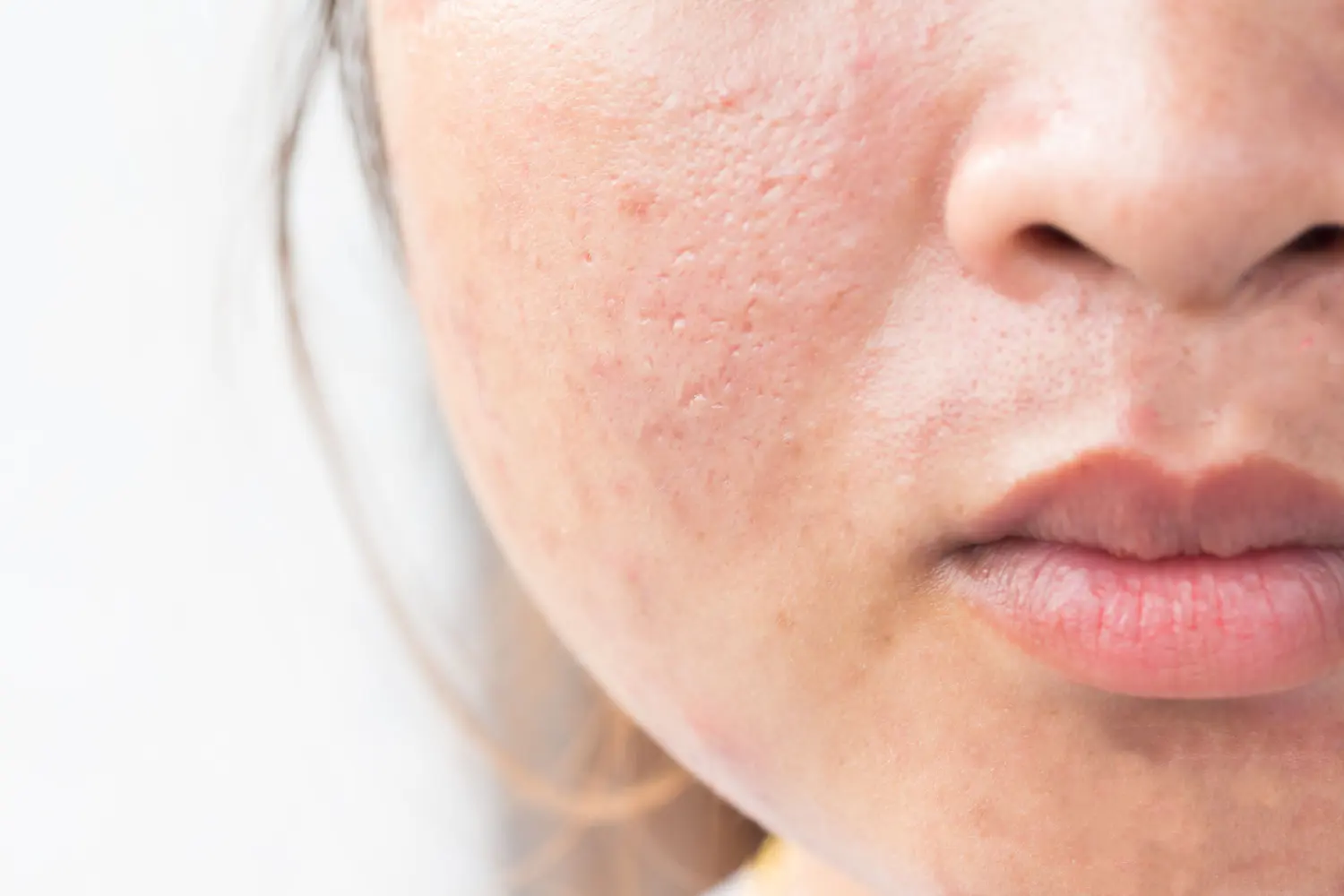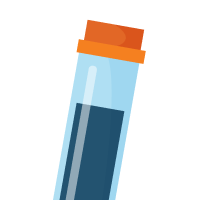Acne, an unwelcome guest that often overstays its welcome, affects a majority of people at some point in their lives. It can sometimes leave behind unpleasant mementos in the form of scars. These acne scars can vary widely in their appearance and severity, often causing psychological distress. However, understanding the different types of acne scars and how to treat them can be empowering and provide a roadmap to clearer, healthier skin.
A Brief Introduction to Acne
Acne is an extremely common skin condition, affecting approximately 80% of individuals between the ages of 11 and 30. It typically arises due to clogged pores resulting from a build-up of dead skin cells, oils, and bacteria. Hormonal changes, particularly during the teenage years, can exacerbate acne. However, adults are not immune, with stress, environmental factors, and hormonal fluctuations often contributing to adult acne.
Acne Scars: An Overview
When an acne lesion heals, it can sometimes leave behind a scar. The severity and type of scarring depend on several factors, including the type of acne, the individual’s unique skin healing response, and how the acne is treated or managed. Scarring is more likely to occur with severe acne types, such as nodular or cystic acne, and inappropriate handling of acne, such as picking or squeezing.
Contrary to popular belief, not everyone who experiences acne will develop scars. However, for those who do, understanding the different types of acne scars can be helpful in determining the most effective treatment approach.
Decoding the Types of Acne Scars
Acne scars can broadly be categorised into two types: atrophic or depressed scars, and hypertrophic or keloid scars.
Atrophic or Depressed Scars
Atrophic scars are characterised by depressions or indentations in the skin, resulting from a loss of skin tissue during the healing process. These scars typically occur on the face, where the skin is thinner. There are three main types of atrophic scars:
Boxcar Scars
Boxcar scars are broad, shallow depressions with well-defined, steep edges. They often resemble the scars left by chickenpox. These scars tend to occur in areas where the skin is thicker, such as the lower cheeks and jaw.
Ice Pick Scars
Likened to the marks left by an ice pick, these scars are small, narrow, and deep, extending into the skin’s surface. Ice pick scars are notoriously difficult to treat due to their depth and are often found on the cheeks.
Rolling Scars
Rolling scars are distinguished by their undulating appearance, with the skin surface appearing wavy and uneven due to the scars’ sloping edges.
Hypertrophic and Keloid Scars
Unlike atrophic scars, hypertrophic and keloid scars are raised above the skin’s surface. These scars occur when the skin produces an excess amount of collagen during the healing process, leading to an overgrowth of scar tissue. Hypertrophic scars are typically the same size as the acne that caused them, while keloid scars extend beyond the original acne spot. These types of scars are more common in darker skin tones and tend to occur on the jawline, chest, back, and shoulders.
Post-inflammatory Hyperpigmentation
While technically not a scar, post-inflammatory hyperpigmentation often occurs following an acne lesion’s healing. This involves a darkening or discolouration of the skin, which can range from pink to red to brown. It is particularly common in individuals with a higher amount of melanin in their skin. Over time and with proper sun protection, these spots will typically fade and resolve on their own.
Acne Scar Treatments: A Comprehensive Guide
Treatment for acne scars depends on the type of scar and its severity. In many cases, combination treatments may yield the best results. The primary goal of treatment is to improve the scar’s appearance and restore skin health. It’s important to remember that not all scars will disappear completely, but most treatments can significantly reduce their visibility.
At-Home Treatments
Over-the-counter (OTC) treatments can be effective for treating mild atrophic acne scars. Retinoids, such as Differin, can promote collagen formation and even out skin pigmentation. Topical creams containing alpha hydroxy acids, lactic acid, retinoids, or salicylic acid can also be beneficial. However, it’s crucial to avoid at-home chemical peels without professional guidance, as they may potentially cause more harm than good.
In-Clinic Treatments
Professional treatments for atrophic scars typically involve two stages. The first stage aims to reduce the scar’s depth, while the second focuses on reducing any associated discolouration. Dermatologists may use a combination of treatments, including:
- Chemical peels
- Dermabrasion
- Dermal fillers
- Laser therapy
- Microneedling
- Punch excision or punch grafting
- Subcision
- TCA Cross (chemical reconstruction of skin scars)
For hypertrophic and keloid scars, treatment focuses on reducing the scar’s height. This may involve steroid injections, surgical removal, laser therapy, or home treatments such as bio-oil, massage, or silicone sheeting.
Professional Acne Treatments from Hair & Skin Science
In recent years, innovative treatments like Platelet-rich Plasma (PRP) and CO2 Fractional Laser Treatment have emerged as effective solutions for acne scarring. These treatments are particularly effective for severe acne scarring and can be tailored to individual needs.
Platelet-rich plasma (PRP) is an effective scarring acne treatment that alleviates active acne as well. With this method, we inject platelets containing growth factors into your skin to boost new collagen and elastin production. The platelets also increase blood flow, which helps restore your skin’s dermis and appearance, alleviating acne scarring.
When it comes to laser treatments and laser resurfacing, carbon dioxide fractional laser is among the safest and most effective. With this therapy, we reduce deep and shallow scars, while we thicken and tighten your skin. This option is suitable if you have a lighter skin tone with an irregular texture.
When to Seek Professional Help
While minor acne and post-inflammatory hyperpigmentation often resolve on their own, persistent or severe acne, particularly if accompanied by scarring, warrants a consultation with a dermatologist. Early treatment of acne can often prevent scarring, and existing scars can be effectively managed with the right treatment approach.
The Long-term Perspective
While acne and acne scarring can be distressing, it’s crucial to remember that effective treatments are available. With early intervention and appropriate management, the impact of acne scars on appearance and self-esteem can be significantly reduced.
Prevention is Better Than Cure
Preventing acne scars is often easier than treating them. This involves managing acne effectively, avoiding picking or squeezing acne, protecting the skin from the sun, and adopting a healthy lifestyle. Regular consultations with a dermatologist can also help manage acne and prevent subsequent scarring.
Wrapping Up
Acne scars can be a physical and emotional burden. But understanding the different types of acne scars and how they can be treated can pave the way towards healthier, clearer skin. Remember, every individual’s skin is unique, and what works for one person may not necessarily work for another. Consulting with a dermatologist can help determine the most effective treatment plan tailored to personal needs and skin type. So, even if you’re battling acne scars, remember that help is available, and clearer skin could be just around the corner.
Take Control of Your Skin’s Health Today
Don’t let acne scars define you. At Hair & Skin Science, we offer cutting-edge acne scarring treatments that are tailored to your unique skin type and concerns. Our expert team is committed to delivering results that not only improve the appearance of your skin but also boost your confidence. Why wait another day to take the first step towards clearer, smoother skin? Schedule your personalised consultation now to discover the most effective treatment options for your acne scars.





